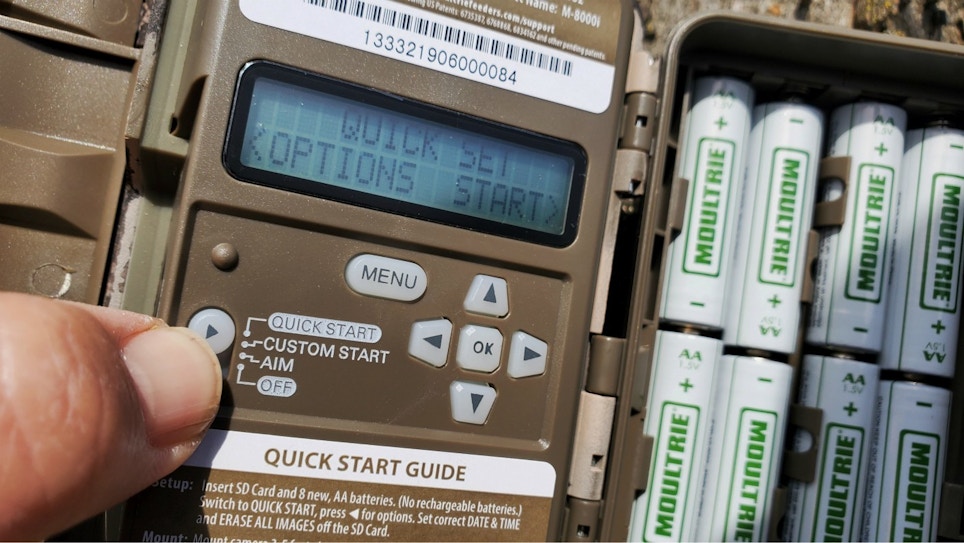For more than 100 years, game cameras, also known as trail cameras, have been the eyes of wildlife biologists, conservation agencies and outdoor enthusiasts alike to observe animal activity when nobody is around.
Dating back to at least 1906, game camera technology has also improved dramatically; in fact, clear up to 2000, while game camera tech and performance had dramatically improved, most were still running on 35mm film and traditional flash photography for night images. I can remember watching the distant flash of my 2003 model camera hanging from an old oak tree deep in the woods more than 100 yards away from my kitchen window.
It didn’t take long for digital camera technology to sweep the game camera landscape, leaving their 35mm counterparts at the bottom of retailer clearance bins. Infra-red LED illumination followed shortly after and digital game cameras with old-school flashes followed suit. Through much of the 2000s, digital cameras with IR LEDs ruled the roost; however, one other LED innovation just a handful of years ago, stealth IR, has risen to the top of game camera features.
While stealth IR cameras continue to gain market share and, in fact, have become the new standard, consumers have taken note of even more advanced techy features designed to minimize human interaction with the wildlife we surveil, especially where such technology intersects with affordable price points. Case in point, Moultrie’s latest and greatest, cellular-compatible M8000i Game Camera.
The Walk-Around
Sometimes big things do come in small packages. Considering the M8000i’s compact dimensions — just 3.5 inches wide, 4.75H inches tall and 3.75 inches thick — this camera packs a wealth of premium-performance game camera features. Included are a lightning-quick 0.3-second trigger speed and high-resolution, 20-megapixel still images. Gone are the days of trying to determine how many points are on that big buck’s rack — heck, my DSLR doesn’t even deliver 20-mp photos!
The Moultrie M8000i’s delicate components are protected from the elements in a rugged molded-plastic case complete with a camouflage finish. The split halves of the case are sealed via a hinged side door. From top to bottom, the face of the Moultrie M8000i boasts 32 IR LEDs, a light sensor, camera lens, aiming LED and a wide-angle passive infrared (PIR) sensor. The external bottom of the camera case houses covered micro-USB and external power ports.
To attach the Moultrie M8000i to a tree or pole, the kit includes a quite long piece of 1-inch-wide web strap. The strap is long enough to mount the camera on a truck a couple of feet in diameter. I mounted the M8000i on a tree less than half that, so I wrapped the strap around the trunk twice and tied the excess close to the camera body. To cinch the strap tight and keep it that way, the M8000i’s mounting system includes a spring-loaded buckle. This is an exceptionally nice feature considering years and years of camera installations with marginally loose straps, no matter how hard I pulled the slack out. Moultrie’s buckle system keeps the strap from strapping.
The strap is fed through the M8000i’s molded Python loops on the back plate. The back surface of the loops, as well as another raised nub beneath and center of the loops, are textured to eliminate slipping. The bottom of the camera case also includes a ¼-inch screw boss to accommodate tripod-style mounting.
Under the Hood
Opening the case reveals a left-side control panel with a LCD screen, mode selector slider, menu button, four-directional navigation buttons and a center “OK” button. The right side of the unit houses the eight AA batteries used to power the M8000i.
The mode slider button includes three options: Quick Start, Custom Start and Aim. The Quick Start option features pre-programmed Motion Detection, 30-second delay, 3 Triggered, Photo Capture and High PIR Sensitivity. Custom Start allows the configuration of seven camera setting type options: Motion Detection, Timelapse, Motion+T.L., InfoStrip, Photo/Video (including single and burst photos), Memory and System. Each setting type includes several options, navigated with the directional buttons and selected with the “OK” button.
While setting up the camera in Quick Start is a no-brainer, working through custom settings is pretty darn intuitive once you get the hang of navigating and selecting. During operation, the LCD screen displays remaining battery life, the selected mode, the number of photos taken and the number of photos remaining.
Along with vivid still imaging, Moultrie’s M8000i boasts true, full-color, HD daytime and crisp infrared (IR) nighttime video capture thanks, in part, to a robust 80-foot detection range and equally as impressive 80-foot stealth IR-flash range. Nighttime still photos and video are made better by Moultrie’s proprietary Illumi-Night 2 Sensor. Photo and video content are captured to an external SD card. The Moultrie M8000i is compatible with SD cards with storage space up to 32 gigabytes. For high-resolution photo and video content, I recommend using a Class 10 card.
One to Grow On
Moultrie purports to be the most popular trail camera in America. I haven’t seen the data to back it up and I don’t work in that facet of the camera biz. I’m simply an end user with more than 15 years of hardcore game camera usage under his belt. I’ve relied on cameras as part of my regular scouting regimen clear back to those old-school-flash 35mm models and have used Moultrie cameras, including the iconic I40 over a decade ago, with great success.
Being a devout user has allowed me to watch game camera innovation flourish, more recently to include cellular connectivity. Unfortunately in years past, such a convenient creature comfort has been costly in product price and monthly fees.
Herein lies great news, though. Consumers with no current interest in cellular game camera service are already set; however, for those in the market for affordable cell service, the M8000i is compatible. One only needs to purchase an AT&T or Verizon field modem and jump into a Moultrie Mobile plan. Moultrie offers 3G and 4G plans ranging from $4.99 to $49.99 per month.
SPECS
- 20 MP images
- Invisible flash
- 80 foot detection and flash range
- 0.3 second trigger speed
- Record full HD video
- Two-Year Warranty







